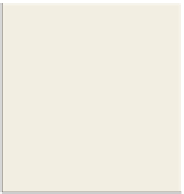Graphics Reference
In-Depth Information
ω
0
and above. Rerender your image using
S
with an
appropriate band limit, based on
z
, and compare aliasing in the rerendered image.
(d) The aliasing may still seem excessive to you, and the Gibbs phenomenon arti-
facts may also be annoying. Experiment with other approximations to a band-
limited version of
S
, and with band limiting to a lower frequency than might seem
necessary, and evaluate the results.
(e) Truncating the series at the band limit (i.e., multiplying by a box in the
frequency domain) is not the only way to remove high frequencies. Try using the
Fejer kernel (i.e., multiplying by an appropriately dimensioned tent in the fre-
quency domain) to see if you can get more satisfying results.
Exercise 20.4:
In two dimensions, imagine a parabolic mirror like the one
shown in red in Figure 20.26, with the equation of the form
z
=
2
(
1
which removes all frequencies
y
y
2
)
. Rays
(in green) coming from a semicircle of directions are reflected to become rays (in
blue) parallel to the
z
-axis (and vice versa).
(a) Show that the
yz
-vector
n
=
y
,1
T
is normal to the red curve at the point
(
y
,
z
)=(
y
,
2
(
1
−
2
z
0
y
2
))
.
(b) If light traveling in the direction
0
−
-2
1
T
strikes the mirror at
(
y
,
z
)
and
reflects, in what direction
r
does it leave? Write out your answer in terms of
y
and
z
.
(c) Show that at
(
−
-2
0
2
1, 0
)
the outgoing ray is in direction
±
10
T
.
Figure 20.26: The red parabolic
mirror reflects light from a semi-
circle of directions onto a line
segment.
±
(d) Show that incoming rays in direction
0
1
T
whose
y
-coordinate is between
−
−
1 and 1 become outgoing rays in all possible directions in the right half-plane.
(e) If you spin Figure 20.26 about the
z
-axis, the red curve generates a paraboloid.
Show that in this situation, incoming rays in the direction
0
1
T
with starting
−
points of the form
(
x
,
y
,1
)
, where
x
2
+
y
2
≤
1, produce all possible outgoing rays
in the hemisphere of directions with
z
0.
(f) If we take a second paraboloid defined by spinning
z
=
≥
1
+
y
2
)
, then
arrows in direction
01
T
, arriving from points of the form
(
x
,
y
,
1
2
(
−
−
1
)
, where
x
2
+
y
2
1, reflect into outgoing rays in the opposite hemisphere of directions.
These two reflections establish a correspondence between (1) two unit disks par-
allel to the
xy
-plane, and (2) two hemispheres of directions. Write out the inverse
of this correspondence.
(g) Explain how you can represent a texture map on the sphere (e.g., an irradiance
map, or an environment map, etc.) by providing textures on two disks.
(h) Estimate the largest value of the change of area for this “dual paraboloid”
parameterization of the sphere to show that it uses texture memory quite effec-
tively, even though
≤
4 of each texture image (the disk within the unit square)
gets used for each half of the parameterization.
π/





























